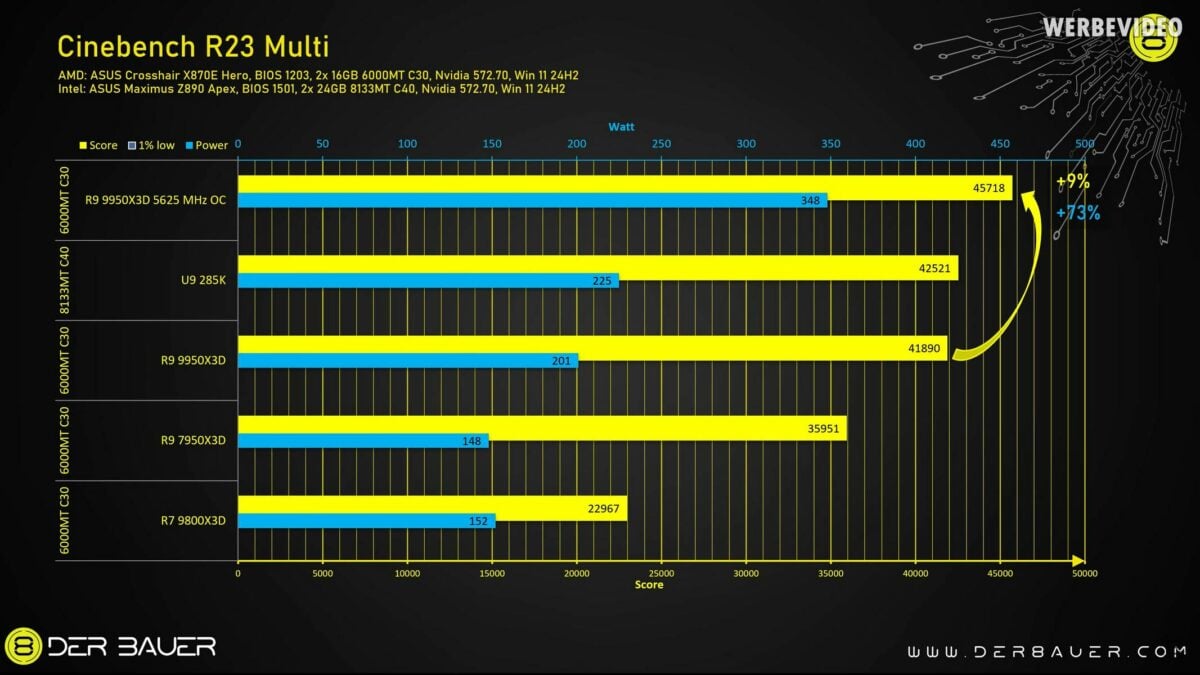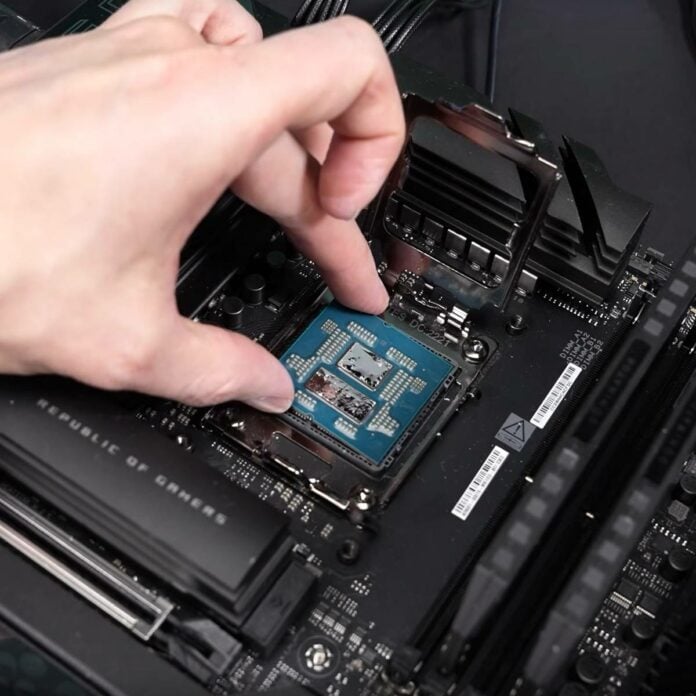Convenient as Integrated Heat Spreaders (IHS) are, many processors’ temperatures benefit from delidding. This maxim proves true once again with AMD Ryzen 9 9950X3D, after one enthusiast took it upon themselves to free the CPU from its proverbial chains to great effect.
After removing the IHS from their Ryzen 9 9950X3D, YouTuber and reviewer der8auer set about testing the potential of direct die cooling. This should improve heat transfer between the chip and cooler, subsequently reducing CPUs’ operating temperatures.
Using a Thermal Grizzly direct die water block and some liquid metal, der8auer was able to reduce temperatures under load by 23°C compared to the original IHS plus thermal paste configuration. While the liquid metal plays a role in this improvement, most of it comes from removing the thick AM5 IHS.

Seeing the extra cooling and power headroom on hand, the YouTuber dabbled into a quick overclocking session using AMD’s PBO (Precision Boost Overdrive) feature. After adjusting some BIOS settings plus maxing out PBO to let the motherboard push as much power as the CPU asks for, der8auer managed to boost performance by 9% in Cinebench R23. While gaming performance saw only a 3% average fps boost, 1% lows jumped by 9%.
Unsurprisingly, unlocking PBO/overclocking comes at the cost of higher power consumption and heat, in this case, requiring 48-73% more power across Cinebench and Counter-Strike. In my view, delidding would work best in conjunction with undervolting or stock settings. For example, keeping the chips’ default 200W limit resulted in a peak 51°C operating temperature.
Impressive as these results are, it’s worth remembering that delidding isn’t without risks, as der8auer rightly highlights. If you’re not careful enough during the removal of the IHS, you could end damaging your processor beyond the point of repair. Still, if you’re confident you can do it right then brilliant improvements await.


